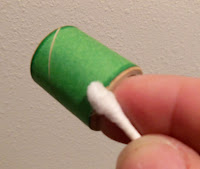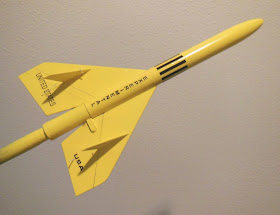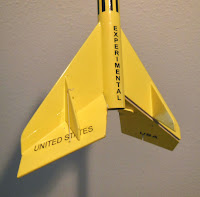 Here's some back story on the Flutter-By from the Semroc Spartan kit instructions:
Here's some back story on the Flutter-By from the Semroc Spartan kit instructions:
"The Stellar Spartan was the second in the Centuri Stellar Line. Originally planned for mass merchandising, the line was later changed to mail-order only, then dropped. The Spartan was an early prototype for the later Screaming Eagle which replaced it. Leftover parts from the Spartan were used for a few years on the
Flutter-By until they were gone."
Looking at the Spartan fin profile, you can see it's the same fin.
The "Flutter-By" -
not a very macho rocket name.
I had an original Centuri Flutter-By in the mid 1970s.
As I remember, it performed well with A8-3 engine's.
I bought two Flutter-Bys in the recent Estes Clearance Sale.
I put off buying the re-issued kit because the price was too high.
Up until the sale the retail price was $14.29!!!
High - considering how few parts are in the bag.
In the picture above notice the laser cut lines for fin strake positions.
Parts of interest:
The nose cone is longer than the Centuri version. The original was a Centuri PNC-80, 2" long. This nose cone is 3 1/4" tall.
The drawn lines on the decal are thick compared to the original kit.
It's missing the chrome trim included in some Centuri kits at the time.
I'll be referring to this one as a Centuri Flutter-By.
I won't be using the strakes and will try to make it look a little more like the Centuri catalog picture seen
HERE.




































.jpg)












